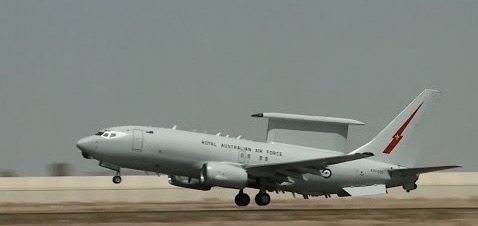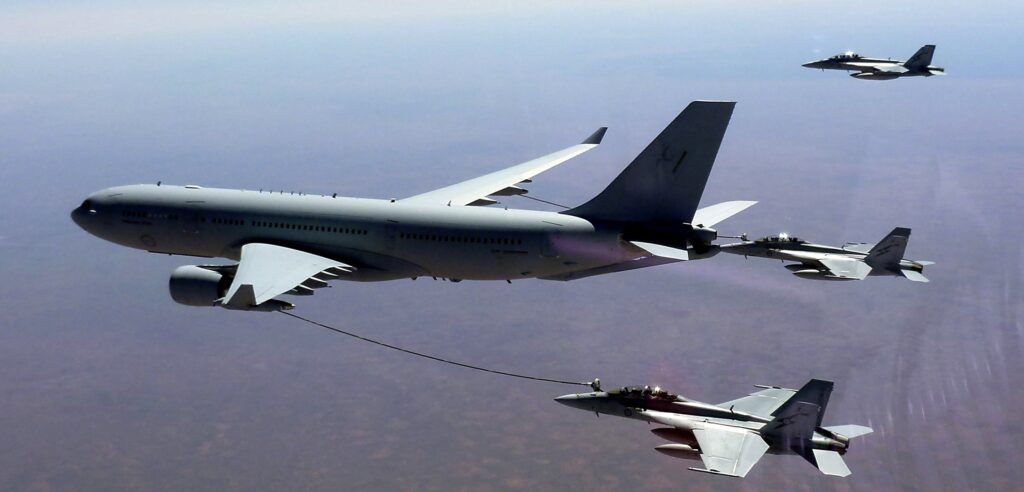Iraq And The Transformation of the Royal Australian Air Force
Posted on
Washington often grumbles about its allies and their contributions — or lack thereof — to the common defense. But some allies are making key investments in 21st century weapons to operate against 21st century threats.
A good example is the Royal Australian Air Force (RAAF) and its operations against ISIL in Iraq. The RAAF strike force flew from Australia to the Middle East using its own tankers and airlift. It’s been a long road to this sort of deployment. The Aussies entered the 21st century with an aging Air Force. The transformation really began when they added the C-17, which was at the end of its production run.
“Government suddenly realized that they had the speed and capacity to make an Australian flag appear anywhere in the South Pacific region within 12 hours and then have a revisit capability within the next 24 hours or less, if you’re utilizing two or more aircraft,” said Air Commodore Gary Martin, now the Air Attaché in Washington but most recently commander of the Air Mobility Group, “This was a shift from a three- to four-day process to one of 12 hours. This changed us from being tactical airlift to strategic airlift. With the C130, it always took a day to get offshore and then another day to get to the first point after that. With the C-17, we could now conduct an operation from anywhere in Australia, pick up a load in Australia, get offshore, and come back home before 9:00. This was a quantum leap for the RAAF and for the Government.”
The new A330MRTT tanker is the next piece in the transformation of the small but capable Australian military. The impact of the tanker, which can be refueled itself, has already been significant in allowing the Aussies (individually and in terms of coalition contributions) to engage with extended reach, range and endurance.
Another key piece is the Wedgetail, an advanced air battle management aircraft. In many ways, the Wedgetail is the E-10, which the American Air Force decided not to buy. The Wedgetail is not simply a new form of AWACS. The AWACS is pushing the upper limit of what it can do. By contrast, the new Multi-Role Electronically Scanned Array (MESA) radar on the Wedgetail is a whole other animal, able to reshape what a battle management radar can do over time in working with new aviation assets.
Recently, the Wedgetaail set an Aussie air combat record in Iraq. Here’s how the Australian Ministry of Defense put it:
“At 16 hours and 18 minutes, the E-7A Wedgetail’s mission entailed the command and control of large numbers of Coalition aircraft operating in Iraqi airspace as part of the multi-national air campaign confronting ISIL. Commander of Australia’s Air Task Group, Air Commodore Steve Roberton commented on what the endurance mission meant for Australia’s air power capability.
“‘After already being on station for a number of hours, the Australian Wedgetail crew was advised the Coalition aircraft due to relieve them was delayed,’ Air Commodore Roberton said. In response, the Wedgetail crew quickly assessed their ability to coordinate additional air-to-air refueling and agreed to substantially extend their mission.”
Both the Wedgetail and the KC-30A (known by many as the Airbus A330) have made their first operational appearance in Iraq. The two planes allow the Aussies to operate as a coherent strike force in Iraq and to work closely with coalition partners.
The movement of the RAAF from Australia to Iraq was a defining moment for the RAAF and marked the first time they self-deployed an air combat package, equipment and personnel over such a long distance and in such a short period of time. The KC-30Amade it possible with the C-17./.”
As of mid-January, the KC-30A fleet has delivered more than 10 million pounds of fuel to Aussie and coalition aircraft. And the press of operational requirements has led the tanker to be certified for an increasing array of coalition aircraft as well.
The KC-30A has now been certified with aircraft from five countries, including the United States, France, Britain, Canada and Saudi Arabia.
“There was some hesitation as the US Navy looked at the KC-30A for AAR operations. However, in the Fall of last year NAVAIR came to Australia to test the aircraft refueling the F-18. These tests were very successful and we provided the USN with a robust level of confidence in the KC-30A as a result,” Air Commodore McDonald said.
The Wedgetail and the KC-30A will be joined in the next few years by Aussie F-35s, which will be part of what the current Chief of Staff, Air Marshall Brown is calling Plan Jericho. This initiative will formally be announced at the Avalon Air Show at the end of February in Australia. Plan Jericho is designed as an overall transformation effort by the RAAF in support of joint and coalition forces.
As a result of these purchases, the Aussies will boast one of the youngest allied air fleets in the decade ahead.
The youth of those platforms are driving cultural change in the Australian military, as Air Vice-Marshal (Ret.) John Blackburn argued in an interview late last year.
“These changes in the RAAF may in turn influence how the US Forces use their range of capabilities. In perhaps a unique fashion we’re at the intersection of a set of relationships with U.S. Navy, the U.S. Air Force, the Marines,” Blackburn said. “This relationship is especially strong at the operator level where the innovations are clearly going to occur. We will clearly tap into the US and allied F-35 community to drive change on how to integrate that change with overall force transformation.”
Subscribe to our newsletter
Promotions, new products and sales. Directly to your inbox.


